Check out some books by your tutor Fiona Veitch Smith … (click on the book covers to find out more)
 This is the second session of eight in our online creative writing course, in which we’ll be exploring how to write a short story. Now that your creative juices have been stirred, you should be ready to start writing; if not, go back and try some of the exercises in the first session of this course, releasing your creativity.
This is the second session of eight in our online creative writing course, in which we’ll be exploring how to write a short story. Now that your creative juices have been stirred, you should be ready to start writing; if not, go back and try some of the exercises in the first session of this course, releasing your creativity.
Writing short stories versus writing novels
Most new prose writers have the beginnings of at least one novel in their drawer. They will get to chapter three or four and give up because they don’t have the skill, confidence or stamina to carry on. If you’d never run a marathon you would be a fool to enter the Great North Run without first attempting some shorter distances. Short stories are the best place for new writers to hone their craft. But don’t be fooled, they’re not necessarily the easiest option. It takes a great deal of skill to write a short story that’s effective – you will have to curtail any tendency to ramble on. And not all writers need to be novelists either. I believe F. Scott Fitzgerald was quite comfortable as a short story writer and only produced the occasional novel out of pressure from his publisher, while the great Raymond Carver never wrote a novel in his life.
Short stories are an endangered species
There was once a time when every magazine carried some short fiction. Sadly, that time has passed. Now, apart from some weekly women’s magazines in the UK, short stories have retreated between the dusty covers of literary publications. The situation has become so bad that a group of leading writers and publishers got together to start the Save the Short Story Campaign and are beginning to make good progress.
Short stories appear to be doing far better across the pond in America where the art form is more respected and accessible to ‘ordinary’ readers. However, there are signs that this may not continue. Read Stephen King’s thoughts on the decline of the American short story. You can check out Writer’s Market for a list of North American short story outlets.
How long is a short story?
So what is a short story? Short stories can be anything from 500 to 6000 words. Anything under 500 words tends to be labelled ‘flash fiction’ or ‘micro fiction’ (although some would argue it’s still a short story) and anything over 6000 is moving into novelette or novella territory. I would argue that a short story is something that can be read comfortably in one sitting and doesn’t leave you starving or bloated. Popular magazines tend to accept work of between 1000 – 2000 words, more literary ones go for longer. Children’s short stories tend to be under a thousand words. If you would like to write for younger readers, check out some of my articles on writing for children.
A short story is a slice of life
A short story is a slice of life. As such, you should narrow the time frame and geographical location of the piece. One plot, two or three characters and no more than two locations (one would be better) should fit into a short story. If this is too tight a fit perhaps you should be writing a novella or a novel.

Fig 1: Short story time span
How to begin a short story
Start your piece as close to the turning point or climax of the story as possible. Most writers take a paragraph or so to find their feet. On a second reading they will delete the first paragraph as unnecessary exposition or padding. Your first sentence is crucial; it should be filled with energy, intrigue and forward momentum. The reader should be stopped in their tracks and not be able to turn away until they’ve read the whole thing. The first sentence should raise questions that need to be answered. Take for example these openers:

- ‘My mother was making me a dress.’ (From ‘Red Dress – 1946′, Dance of the Happy Shades)
- ‘General Sash was a hundred and four years old. ‘ (From ‘A Late Encounter With the Enemy’, The Complete Stories)
- ‘Fact is the car needs to be sold in a hurry, and Leo sends Toni out to do it.’ (From ‘Are These Actual Miles’, The Oxford Book of American Short Stories)
Exercise 4: Jot down questions that arise from these openings and what, if anything, makes you want to read on. If you can get hold of copies of the stories do so. Ask yourself: were the questions answered? Was I satisfied with the answers? Was the answer what I expected?
Exercise 5: Use a trigger image, phrase or thought (see Releasing Your Creativity) then write down a leading, opening sentence. What questions might be raised? How might you answer those questions in a short story? What setting would be most appropriate to answer the questions? How long will it take for the question to be answered? Can you think of any characters that might help you tell the story and answer the question? (We will be looking at building a character in a future session and try writing another story from their perspective). Look over your answers and see whether or not the outline of a short story is emerging. If not, try another sentence or another trigger image.
Beginning, middle, end
Every short story should have an opening that is developed in the middle to build tension which reaches its climax towards the end, after which there is a rapid conclusion. For those of you who have studied any dramatic or literary theory you will recognise this progression as typical Aristotlean Three Act Structure. In a short story you should not spend too much time in the ‘first act’ where development, setting and exposition take place, and should start your narrative as close to the inciting incident (aka point of change, first turning point or initial crisis) as possible. The inciting incident is the event which upsets the apple cart of the characters’ ordinary world and compels them to act in a certain way in order to bring balance or closure to their disrupted environment. In the Red Dress it is the school dance which the narrator fears will bring humiliation. She then tries to fake illness in order to get out of it, then, when this fails, tries to remain as invisible as possible at the dance. We will look at how a character acts to bring or avoid change change in a future discussion.
Exercise 6: What is the ‘ordinary world’ of your opening sentence? Remember, this may be an abnormal world to most readers, but it should reflect the status quo of your characters before it is challeged or shaken up. What challenges this status quo? This is your inciting incident. Using only three paragraphs (50 – 60 words each) or less, start writing your short story. In this short space you should establish your ordinary world, your main character and the inciting incident of your story.
Obstacles, setbacks, climax and resolution
This is the outline of the rest of your story. Imagine a graph of building tension.

Fig 2: Dramatic development in three act structure
Your story should follow that arc by allowing your character to face obstacles, setbacks and minor victories on the way towards reaching the dramatic climax and bringing resolution.
Exercise 7: If you are graphically minded draw yourself a rough graph or jot down the beginning, middle and end of your story. Now write the story and fill in the gaps. If you’re not so graphically minded, just jot down a few key phrases or events that might carry your story forward to a possible conclusion. Don’t worry, this isn’t cast in stone, and you can change the beginning, middle, end and anything in between at any time. Many writers just write to find their voice. That’s fine. Once you have a first draft, go back and see if it has some kind of structure or arc. If not, you may have to tweak it a little.
I hope this has given you some insight on how to write a short story. Happy writing!
The next creative writing course session is writing from a point of view.
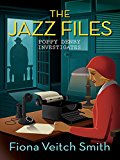
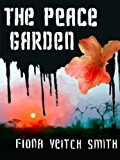
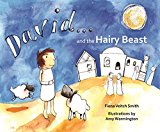
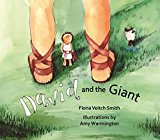
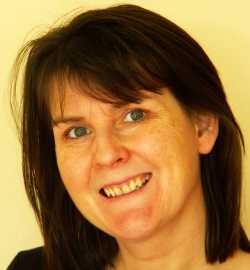 Welcome to The Crafty Writer's free online creative writing course, presented by Fiona Veitch Smith, a freelance journalist, editor, author, playwright, screenwriter and writing teacher. I hope that you'll see a dramatic improvement in the quality of your writing as you work through this course.
Welcome to The Crafty Writer's free online creative writing course, presented by Fiona Veitch Smith, a freelance journalist, editor, author, playwright, screenwriter and writing teacher. I hope that you'll see a dramatic improvement in the quality of your writing as you work through this course. 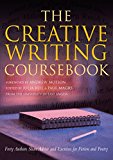
This is a bit of a issue for me. I’m thinking of writing a young adult mystery series. Have about 12 notebooks with the bits and pieces of scenes, dialogue and such. But I don’t know if I should make them short style books or larger.
I’ve always had difficulty with short stories, they never seemed finished. There were always other questions and loose ends that could have been followed. Others tell me that they are good, but I feel like I’m cheating my characters and not delivering the whole story.
I wanted to start at the 12yr old and continue on to teen, the kicker is that little sister continues the legacy once the main goes off to school. It’s got a whole lot of twists, turns and life experience in all those notebooks.
Should I write a few short stories and then start up with the main series? Not sure how to progress with all that I have waiting to be developed.
Hi Starr, you may find my post on writing mystery stories for children and young adults useful http://www.thecraftywriter.com/2007/08/22/writing-for-children-mysteries-and-thrillers/
Regarding short stories versus novels, it seems like with 12 notebooks full you are tending towards a novel. A short story is a thing in itself and not a practice round for a novel. The story arc is much smaller and there is a discipline in completing that arc in such few words. I suggest you write short stories that are only meant to be that: short. So don’t try to just do an abbreviated version of what should really be a novel.
Yes, I’ve been simply devouring all that I can on your pages. Have already taken notes on that Mystery article. It was very helpful in defining areas I needed to work on.
As for my notebooks, I think, as a friend told me, that’s way too much for just one book. There are several tales, mini adventures that are engaged in by the main character and a growing group of supporting characters. She’s dealing with possible murder, kidnapping, mysterious activities and a whole bunch of bizarre happenings.
As I said, I was thinking of offering them as a series – several people have already agreed that it would be a great idea. I just need to get the manuscripts polished up and sent off already. I’ve been published before – two books for young adults. But it’s been almost 30yrs since I’ve been in the field since I’ve been dealing with life and it’s unending distractions. Life has the tenancy to happen while you’re planning something else.
Sorta like the lighter my kids got me a few years ago…”This is not the life I ordered.”
Unfortunately, there’s no dress rehearsal or re-rolls or retakes. Though I’m still holding out for the chance of a time machine…XD
Short of that, I’ll have to leave bits of me behind in my stories. My kids are already telling me that they want me to publish all my own adventures and stories so that they aren’t lost to the family.
Thanks for such a wonderful site and offering so much to the creative community.
Yes life does get in the way, doesn’t it? And ‘paying’ work too. My favourite maxim is a bastardisation of a WC Fields quote: ‘Work is the curse of the writing classes.’
Pingback: November 2010 Blog Carnival | Write on the Edge
Terrific information!!!!! I would love to start with some short stories.
thanks so much for your free classes. I have managed to do the first 2 lessons. I now realize about the 3 acts to do a short story, thank you for your easy to learn manner. Best Wishes, Linda G.
These guidelines help someone who wants to write creatively, to move quite swiftly from one stage to the next, with the assurance of knowing what sorts of events and actions should move the story forward.
I am so appreciative to you and others like you that have offered these free courses. I am getting a divorce (his idea) but I have always wanted to write short stories and novels as a career. Was a housewife, but I’m pretty good at writing and am so excited now about my life as just a….WOMAN. Thank you so much for this course. It’s a life saver! Sincerely Lisa Vetrone, aged 56 as of tomorrow.
Thanks for the free. To some money is no object, but to me it is. I have written a few short stories and other writings which all my family and friends love. Now though I can see where I can organize them better to be more interesting and dynamic.
Thank you,
June S
I’ve come to the conclusion that I’m not very good at writing short stories, but this lesson makes it sound very simple and to the point. I definitely think I can improve my writing in this area, but I’m more of a poet.
Thanks sooooo much! This is going to help me a lot with my short story. I am so bad at writting them but now it sounds so easy and possible. I also know how to start now!
You’re welcome Elena. Good luck with the story.
Pingback: 10 Resources to Help You Write a Great Short Story
Thank you for having this great wrinting course free of charge it has been a great insight to me and i have found in etremely useful. I have always loved writing but it is only now that i have decided to pursue this! So your course had been a great help (: Thank you again (:
you’re welcome Melanie.
Thanks for the lesson. However, I have a problem with structure.I always have. Perhaps it’s just a lack of practice but I tend to be more on the creative side. So I appreciate you not being so rigid about the organization of the short story. I realize of course that these elements are crucial. I suppose I just have to practice, practice and practice to know when to use what. Any comments would be appreciated.
Hi Oscar,
The use of structure is a continuum in our writing lives. Some people, like Hemingway, work within a very overt structure. Others, like Joyce, are more ‘free’. Both however are equally creative. If stressing about structure stops you from writing then just go with the flow to start with. There comes a point however when you need to take a step back and see how some kind of structure could improve the flow of your piece. It might be useful to ask a writing friend for their advice as they won’t be as close to the piece as you. I would also advise you to find a writer whom you admire and analyse their structure. Perhaps, as an exercise, try to write a story using the same structure. See this simply as an exercise and
make
your writing fit into that structure. You may find it works very well. You may find it uncomfortable. After that you can see what elements of structure you can use in your own writing and take it from there. Good luck with it!
All the best
Fiona
I am in a writing critque group at a local library. The members are fairly positive. We attend
monthly talks given by published authors also. Most of what is discussed is by wroters of adult novels.
I am interested in writing short stories and a future novel for young adults (preteens to 18 yrs old). Is there a blog for short story writers of historical fiction or historical fantasy? I am trying to find out if my historical fiction short stories have much merit at this point in time. Any advice?
Also, I appreciate your “How to write a short story” articles.
Hello Trish, on my blog The Crafty Writer, historical novelist RS Downie did a 3-part series on writing historical fiction. This could be a good starting point for you http://www.thecraftywriter.com/2009/04/25/writing-historical-fiction-1-creating-your-historical-world/ As for online historical writing groups I suggest you just put that in a search engine and see what comes up. Good luck.
I found my characters taking on the structure of the story and they seemed to tell it to me in their own words. I felt like a stenographer taking down their story. They caught my attention right from the start and I followed them up to the top of the arc and then back down the other side to conclusion. I am both exhilierated and exhausted.
Pingback: A Pithy Tale | fictionblues
Thank you so much for offering this free online course. I’ve been writing since I was six years old, but somewhere along the road I stopped. I want to thank you for helping me find my way back! I have so many creative ideas that I dont want to waste. Thank You!
You’re welcome Debbie. I’m glad the creative juices are flowing again. Keep at it.
All of my short stories seem to be very short. They have one line that seems to repeat a few times throughout the story, and they’re normally sad. They have some plot, but they normally have little or no set up. Is this still a short story? Just wondering.
I’ve just finished this lesson and a rough draft of a short story that I really enjoyed writing. I just got carried away after exercise 6 . Thanks!
. Thanks!
Oh I was going to ask, is there a forum where we can all post up our stories to help each other out and edit them and whatnot. That would be pretty awesome!
Hi Alex, we don’t have a forum like that but if enough Crafty students ask for one then perhaps we could put one up. So it’s up to you lot … let me know if this is something you would participate in.
this was helpful because i needded to write a 500 word short story as an extra homework for my yr 7 english teacher and she was gobsmacked at how good it was ty ??